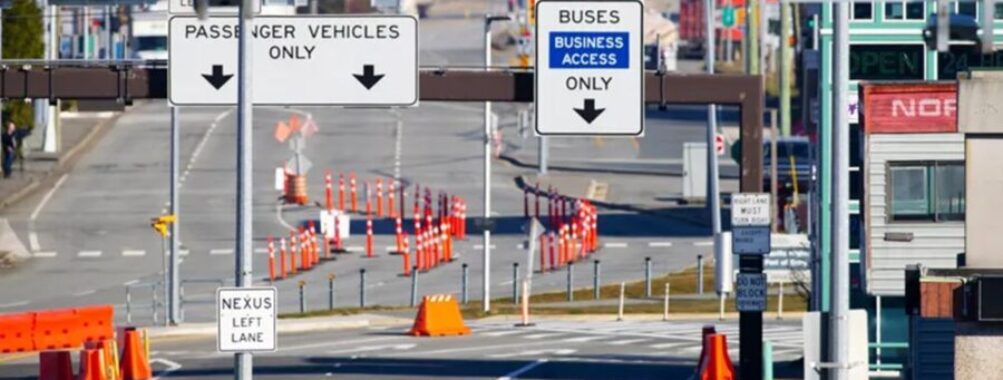
Border Crossing Requirements in USA Canada by Car: 7 Must-Know Rules for a Hassle-Free Trip
If you’ve ever thought about a road trip between the United States and Canada, you’re in good company—I’ve done it so many times, I’ve lost count. Crossing the U.S.-Canada border by car seems straightforward, but a smooth experience really depends on knowing what the border agents want from you.
You’ll need specific travel documents, like a passport or an enhanced driver’s license. Every time you cross, you’ll go through security checks and customs—no exceptions.
Maybe it’s your first time heading north for poutine, or you’re packing up the family for Niagara Falls. The rules for kids, paperwork, and those random customs questions can really make or break the whole drive.
There’s always that little flutter of nerves until you see the green light and roll through. I’ve put together this practical guide to help you get across the border without drama, so you can spend more time actually enjoying your trip.
Table of Contents
- Key Takeaways
- Essential Travel Documents for Crossing the U.S.-Canada Border by Car
- Valid Passport and Passport Card
- Enhanced Driver’s License and Other Accepted Identification
- Requirements for U.S. Citizens and Canadian Citizens
- Travel Documents for Foreign Nationals
- Border Security and Crossing Procedures
- Inspection Process and Questions Asked
- Land Border Crossings and Ports of Entry
- Current Wait Times and How to Check Them
- Digital Tools and Trusted Traveler Programs
- Using the ArriveCAN App and Form Requirements
- NEXUS and Other Trusted Traveler Programs
- SENTRI and U.S. Military Considerations
- Special Cases and Legal Issues
- Crossing with a Criminal Record: DUI, DWI, OWI
- Temporary Resident Permits and Criminal Rehabilitation
- Customs, Taxes, and Duty When Driving Across the Border
- Paying Duty and Declaring Goods
- Personal Exemptions for Travelers
- Cross-Border Shopping and Duty-Free Limits
- Travel Tips and Important Considerations
- Preparation and Planning Ahead
- Vehicle Registration and Requirements
- Border Crossing Requirements for Children and Families
- Traveling with Minors and Consent Letters
- Accepted Documentation for Children
- Other Relevant Border Crossing Scenarios
- Driving Between U.S., Canada, Mexico, and Bermuda
- Frequently Asked Questions
- What specific documents are required for U.S. citizens driving into Canada?
- Are there any current travel advisories for Americans driving to Canada?
- How has the border crossing process changed recently for private vehicles entering the U.S. from Canada?
- Can travelers use a REAL ID in place of a passport when crossing the border by car?
- What are the necessary preparations for taking rental cars across the U.S.-Canada border?
- Are there any vaccinations or health-related requirements for land border crossings?
- Book Your Dream Experience
- More Travel Guides
Key Takeaways
- Bring the right travel documents for crossing the border by car.
- Expect questions and security checks at customs.
- Know the special rules for kids and unique items.
Essential Travel Documents for Crossing the U.S.-Canada Border by Car
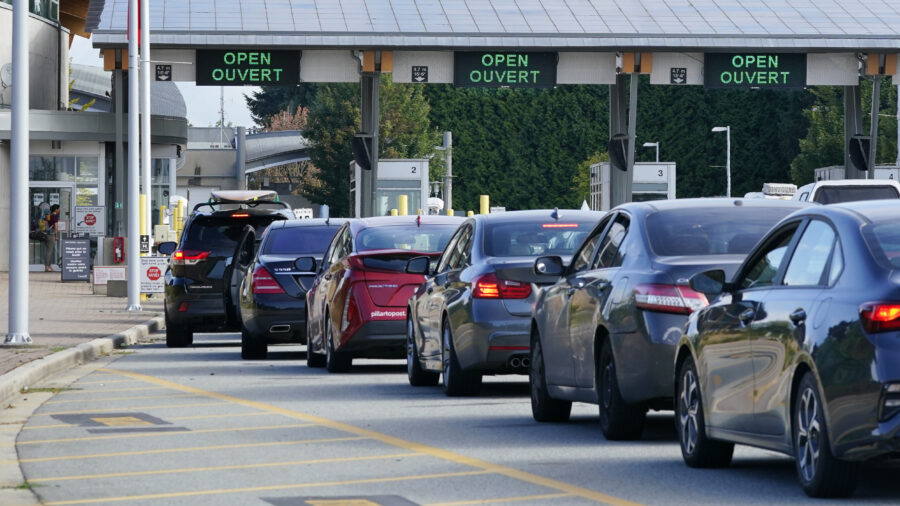
Driving across the U.S.-Canada border gets way easier if you have your documents ready and know what the officials expect. The ID you’ll need depends a lot on whether you’re a U.S. citizen, Canadian citizen, or a visitor from somewhere else.
Valid Passport and Passport Card
You can’t go wrong with a valid passport when you’re driving across the border. It’s still the gold standard for proving who you are and where you’re from.
If you’re planning to visit family or just taking a road trip, throw your passport in your bag. Don’t risk showing up empty-handed at the border; it’s not worth the stress.
The U.S. also issues a Passport Card. It’s only for U.S. citizens, works for driving into Canada (not flying), and fits right in your wallet. I know someone who once confused it for a regular passport and had to scramble at the airport—definitely not ideal.
Check those expiration dates before you lock up the house. Border agents almost never budge on expired documents, even if you’re polite or have a good story.
Enhanced Driver’s License and Other Accepted Identification
Some U.S. states and Canadian provinces offer Enhanced Driver’s Licenses (EDLs). These look like regular licenses but have proof of citizenship built in, and border agents accept them under the Western Hemisphere Travel Initiative (WHTI).
I grabbed mine because it lets me cross without a passport, which is a relief. But not all states or provinces offer EDLs, so look up your DMV or provincial website before you bank on it.
Trusted traveler cards like NEXUS, FAST, or SENTRI also work. They’re a bit of a hassle to get, but if you cross borders often—and hate long lines—they’re worth it. By the way, Real ID licenses (with the star) don’t count for international travel, so don’t be fooled by the fancy corner.
Here’s a quick table to help you sort it out:
| ID Type | For Land Crossing? | For Air Travel? |
|---|---|---|
| Passport | Yes | Yes |
| Passport Card | Yes (land/sea) | No |
| Enhanced Driver’s Lic. | Yes (WHTI) | No |
| NEXUS/FAST/SENTRI | Yes | Sometimes, if enrolled |
Requirements for U.S. Citizens and Canadian Citizens
U.S. citizens need to bring proof of both citizenship and identity. Usually, that means a passport, passport card, or EDL. For kids under 16, a birth certificate works for land crossings, but honestly, a passport is just easier for everyone.
Canadian citizens face something similar. If you’re Canadian and driving into the U.S., bring your Canadian passport, or an EDL if your province offers one (think Ontario, British Columbia, Manitoba, Quebec). Don’t try to use a regular driver’s license without the chip—border agents won’t accept it.
If you’re a dual citizen (U.S. and Canadian), bring both documents if you have them. It’s just easier and saves a lot of questions at the window.
Travel Documents for Foreign Nationals
If you’re not a U.S. or Canadian citizen, you need to be extra prepared. At the very least, you’ll need a valid passport. Depending on your citizenship, you might also need a visa or an Electronic Travel Authorization (eTA) for Canada, or a visa for the U.S.
These requirements change often, and I’ve watched people get turned away because they assumed they didn’t need a visa. Always check the official government websites for both countries before you hop in the car.
Don’t forget, kids need travel documents too. If you’re driving with kids who aren’t yours—like nieces, nephews, or a friend’s child—bring a notarized letter of consent from their parent or legal guardian. People forget this step all the time, and it can really derail your plans.
Border Security and Crossing Procedures
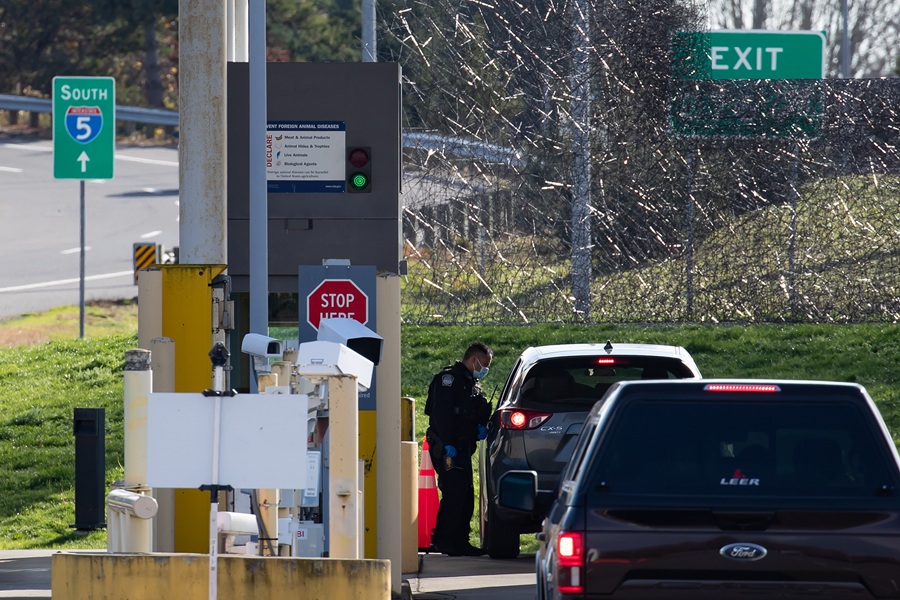
Crossing the USA–Canada land border by car isn’t rocket science, but you do need to follow the rules and expect some security steps. You’ll go through inspections, official checkpoints, and sometimes get stuck in long lines, especially at busy crossings.
Inspection Process and Questions Asked
Every time you cross, a border agent will stop you for inspection. They’ll ask to see your proof of citizenship or residency, so keep your passport, EDL, or whatever you’re using right on top—don’t fumble around at the window.
You’ll probably get questions like:
- Why are you traveling?
- Where are you going?
- How long will you stay?
- Are you bringing anything new, like gifts, alcohol, or food?
- Do you have more cash than allowed, or anything restricted?
If you answer honestly and keep it simple, you’ll usually get through fast. Sometimes they’ll check your car registration or take a look in the back seat. Once, an officer asked me if I had apples—apparently, fruit is a big deal. Don’t joke or overshare; just answer what you’re asked.
Land Border Crossings and Ports of Entry
You’ll find dozens of official land crossings between the USA and Canada. The big ones—like the Peace Bridge (Niagara Falls/Buffalo) or Detroit-Windsor Tunnel—get busy but run pretty smoothly. Out west, quieter crossings like Blaine (BC/Washington) can actually save you a ton of time, especially if you’re used to Toronto or Montreal traffic jams.
Always stop at official Ports of Entry. Trying to sneak through a shortcut isn’t worth the fines or the hassle. I once tried a “shortcut” near Vancouver and ended up with a stern talking-to from a border guard. Each crossing has its own hours, facilities, and sometimes specialties (commercial vs. personal vehicles), so check before you go. If you’re bringing a pet or something unusual, not every port can handle it.
Current Wait Times and How to Check Them
Wait times can be brutal, but you don’t have to wing it. Both the U.S. and Canadian governments post live border wait times online—a quick search for “border wait times” usually gets you there.
I always check about an hour before leaving, especially on weekends or holidays. Most sites break down lines by vehicle type and direction. Some even show charts by hour, which is super handy if you want to dodge the crowds. Early morning or late evening is usually your best bet.
There are apps too, if you like everything on your phone. While you’re waiting in line, have your documents and car registration ready. Nobody in line appreciates a driver digging through the glove box at the last second.
Digital Tools and Trusted Traveler Programs
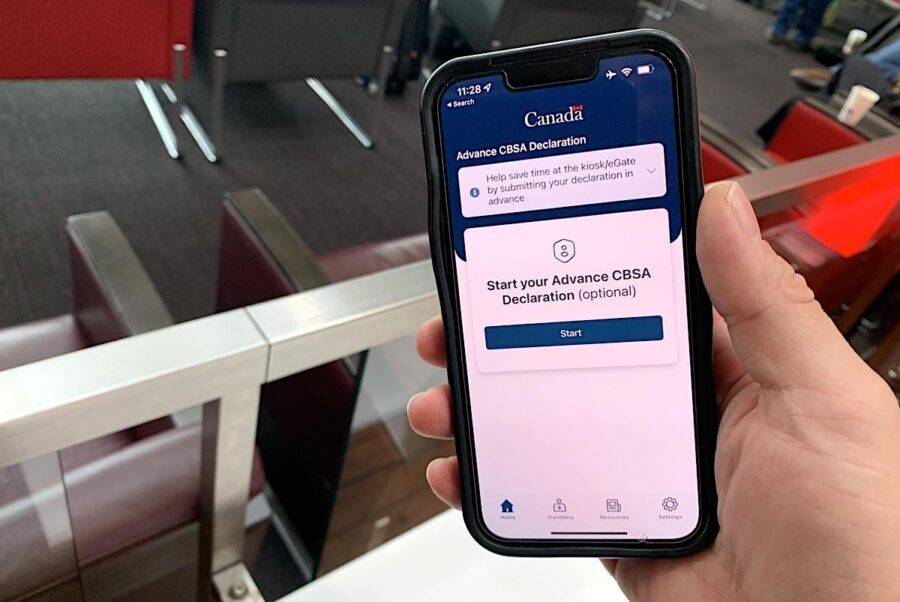
Crossing the U.S.-Canada border by car isn’t just about waving a passport anymore. A few digital tools and special programs can save you time—or at least your sanity—if you know how to use them.
Using the ArriveCAN App and Form Requirements
If you’re heading into Canada, don’t forget about the ArriveCAN requirements. This government app isn’t always optional—it’s required for most travelers. You’ll use it to upload your travel info and, sometimes, proof of vaccination.
Even if you fill it out ahead of time, border agents might ask to see your ArriveCAN receipt. Scrambling for Wi-Fi at the border is a nightmare, so don’t leave it until the last minute.
Take a screenshot of your ArriveCAN confirmation and keep it handy on your phone. It’s much faster than digging through your email. If your phone’s acting up, print the receipt and bring a hard copy.
NEXUS and Other Trusted Traveler Programs
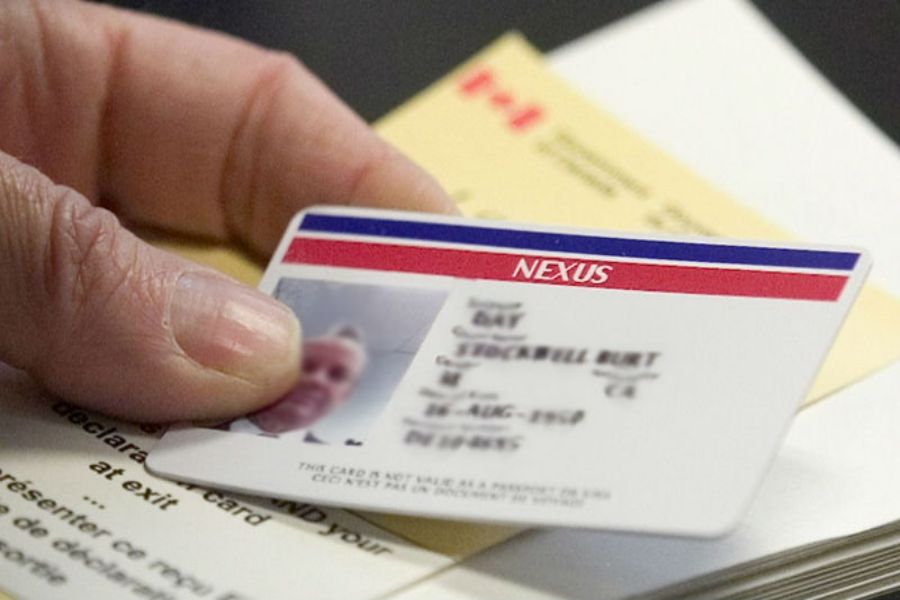
If you cross often, NEXUS is a total game changer. It’s for “low risk” travelers with a clean record. After a thorough application and interview, you get a NEXUS card that lets you use special lanes at many land crossings.
The speed difference is wild—sometimes you’ll breeze past an hour-long line in five minutes. Families can include kids, and you don’t all need the same citizenship (just NEXUS membership). You’ll also get perks for air and boat crossings, but by car is where it really shines.
Besides NEXUS, there’s Global Entry (great for frequent flyers), but for driving between the U.S. and Canada, NEXUS is the one to get. Check the trusted traveler details online before you decide.
SENTRI and U.S. Military Considerations
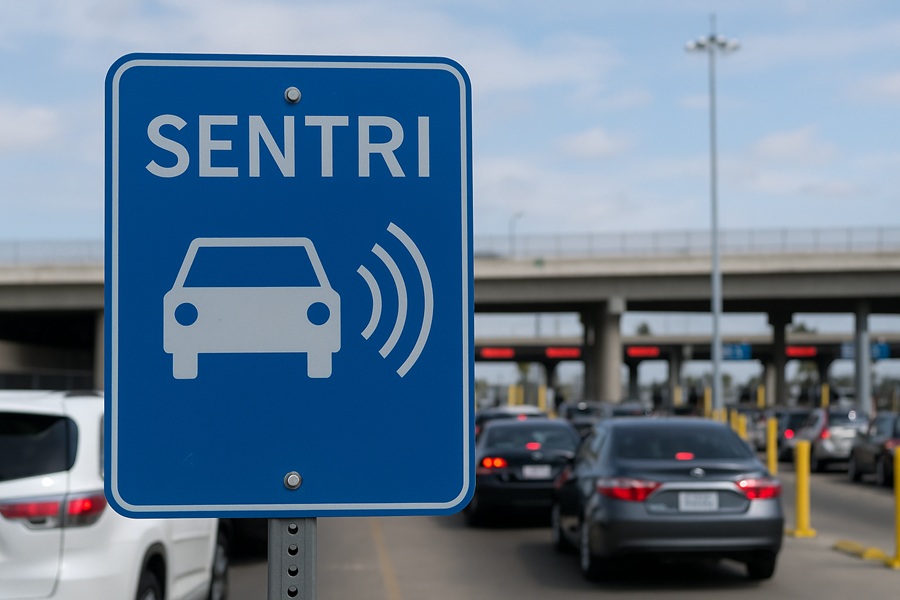
SENTRI lanes mostly speed things up at the U.S.-Mexico border, not the U.S.-Canada one. If you’re planning a trip north, stick with NEXUS.
If you’re active-duty U.S. military or traveling on orders, you might get some exceptions at the border—maybe even expedited processing. It’s best to check with U.S. Customs and Border Protection or Canadian authorities before you go. Always carry your military ID and travel orders. Friends have told me this can help during military moves, but it’s not a shortcut for your regular vacation.
If you don’t qualify for NEXUS or aren’t military, your best bet is patience, paperwork, and flexibility. Rules can change fast. Knowing the details before you go is worth it—rolling up to the border and cruising through is a lot better than sweating in a long line.
Special Cases and Legal Issues
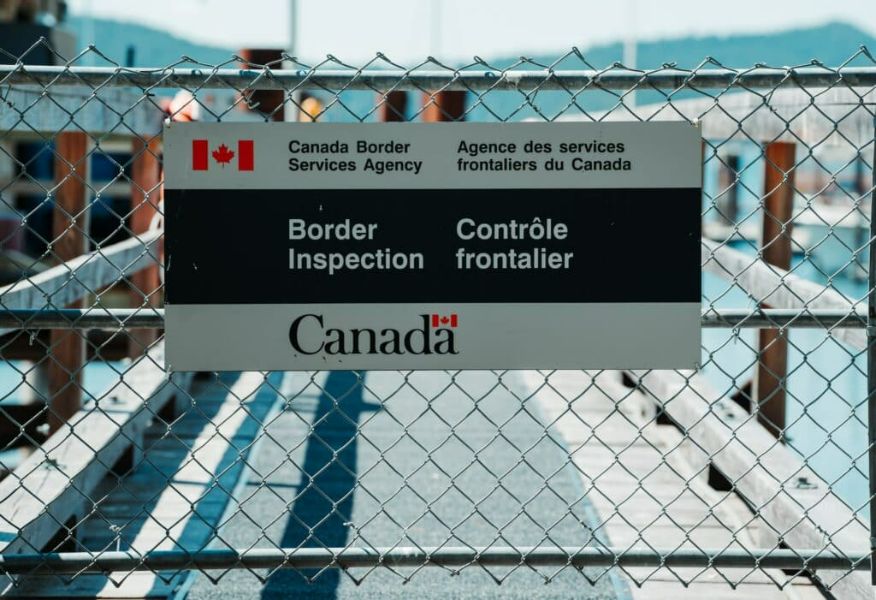
Crossing the border by car isn’t just about flashing your passport. Sometimes, your legal history matters more than you’d expect. Even small run-ins with the law can change your whole trip.
Crossing with a Criminal Record: DUI, DWI, OWI
Let’s be real—you can get turned away at the U.S.-Canada border for a single DUI, DWI, or OWI. Both countries take drunk driving convictions seriously, and it doesn’t matter if it happened years ago. I actually know someone who got denied entry to Canada over a decades-old DWI from college.
Canada treats these offenses as possible serious crimes. U.S. officials can refuse entry to Canadians with criminal records too, especially for violent or drug-related offenses, or if there are several incidents. Bring paperwork showing you’ve paid fines, finished probation, and anything else that proves you’ve resolved things.
If you’re unsure whether your record will cause problems, ask a border official ahead of time. Surprises at the border are never fun, and nobody wants to be stuck in the car with cranky kids while you sort things out.
Temporary Resident Permits and Criminal Rehabilitation
Got a record and still need to get across? There are ways. If you have a DUI or something similar, Canada offers a Temporary Resident Permit (TRP).
This is basically a special permission slip. It’s not guaranteed, but you get a shot if you have a solid reason—work, family, whatever’s important enough.
In the long run, there’s Criminal Rehabilitation. After enough years have passed since your conviction (usually five or ten), you might qualify to be deemed rehabilitated. You’ll need to apply, wait, and if things go your way, you can cross the border like anyone else.
But you’ll deal with forms, background checks, fees—so yeah, expect a bit of red tape. Organization really helps here, trust me.
I’ve watched people panic and shell out for expensive lawyers. Sometimes you’ll genuinely need an immigration expert, especially in messy situations, but honestly, most of these are standard processes if you read the official guidelines.
Don’t overthink it, but don’t just wing it either.
Customs, Taxes, and Duty When Driving Across the Border
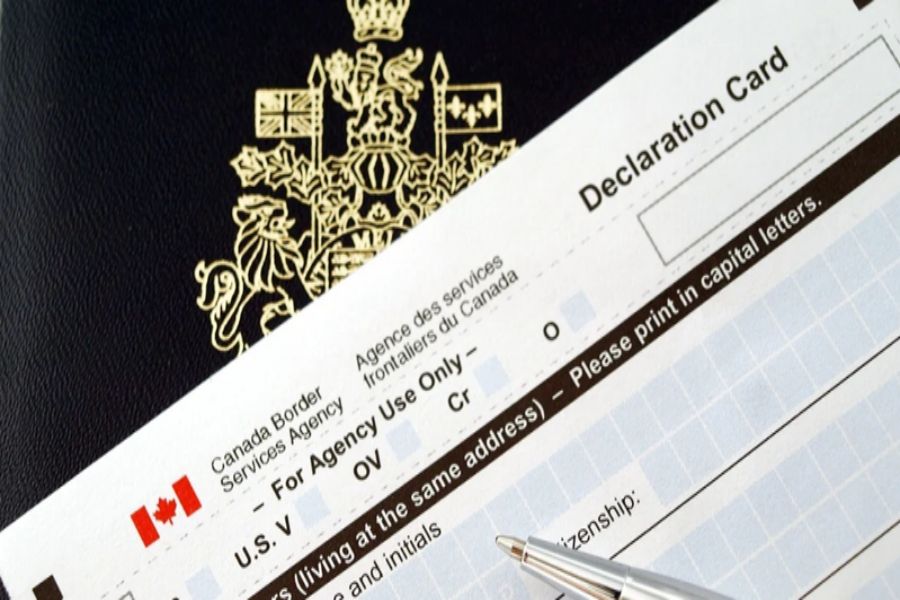
Crossing the border between the U.S. and Canada by car means juggling what you can bring and what you need to declare. The rules aren’t as confusing as they first seem, but you do need to know them.
Paying Duty and Declaring Goods
When you drive into the U.S. or Canada, customs officers will ask if you have anything to declare. That covers gifts, alcohol, tobacco, and anything you bought abroad—even those gas station snacks just over the line.
If you skip declaring something because you think it “doesn’t count,” you can turn a quick crossing into an expensive and awkward delay. Not worth the gamble.
Duty is a fee charged on goods that go over your personal exemption limit. Maybe you pick up a fancy bottle of whiskey for a friend or grab a designer jacket at a discount.
If it’s above your duty-free limit, you’ll pay duty and sometimes taxes. Different goods get different rates, and believe me, officers have seen every hiding trick (not worth trying).
Being honest makes the whole thing easier—your nerves will thank you. You can estimate duty using online calculators from the official border agencies.
The forms and process usually aren’t complicated, especially compared to those massive customs forms on international flights. Most officers appreciate when you’re upfront!
Personal Exemptions for Travelers
If you’ve been away long enough—24 hours or more for Canadians, for example—you can bring back some goods duty-free. The exemptions go up the longer you’re gone.
U.S. travelers also have exemption limits based on their time in Canada. A typical exemption for Canadians after 48 hours abroad is up to CAD $800; for Americans, it’s usually around $800 USD after 48 hours.
That covers most regular shopping trips. The big issues usually come up when people bring back loads of alcohol or cartons of cigarettes.
You can’t stack trips to get around the limit, either. That myth floats around but, trust me, customs agents have heard it all before.
Keep your receipts; officers will ask what you spent. If you guess, they might check your trunk.
I learned early on—never toss receipts when you’re crossing the border!
Cross-Border Shopping and Duty-Free Limits
Shopping across the border can be a blast, especially with different prices and brands on each side. Each country lets you bring in a certain amount duty-free, and there are limits on alcohol and tobacco.
For example, you get one bottle of wine or liquor, or a 24-pack of beer per adult in most cases. If you’re eyeing a bigger haul after spotting flight deals or cheap tickets in the U.S., remember those purchases count toward your exemption—even if you’re just stopping at an outlet mall.
Go over the limit and you’ll pay extra at the border, so it pays to check before you go wild. Some goods are restricted (like cannabis—legal in Canada, but not allowed when you enter the U.S.).
Buying big-ticket items like electronics can trigger more questions, especially if there’s no sign you plan to bring them back home. Unless you love paperwork, keep that in mind.
A quick Google on the border agency’s site can honestly save you a headache. Border shopping is fun, but only if you play it smart and know the rules before you start swiping your card.
Travel Tips and Important Considerations
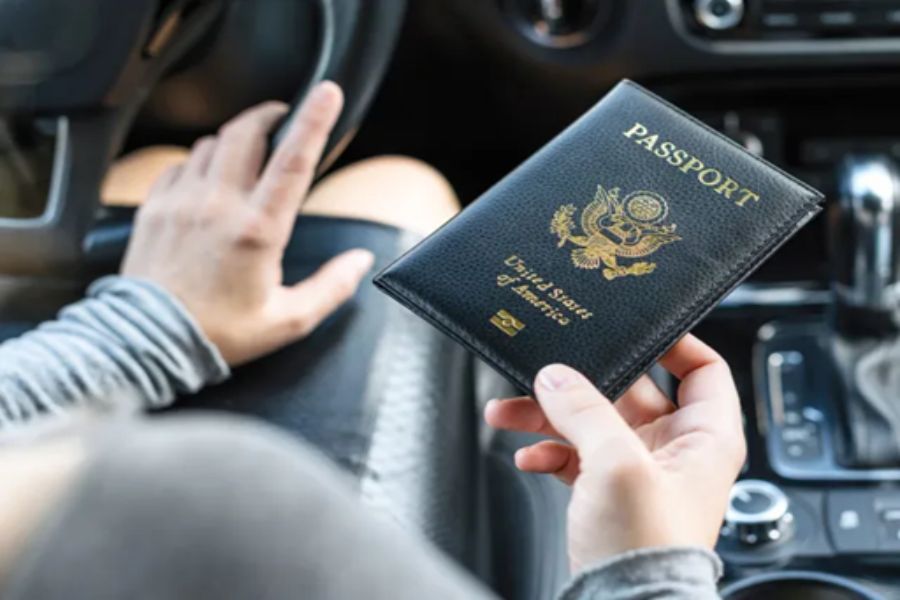
Heading to the border by car goes smoothly if you prep the right documents and know the car rules. Forgetting just one thing can lead to big delays, so a little planning saves a lot of headaches.
Preparation and Planning Ahead
Before you drive to the border, double-check everyone’s travel documents. Most folks need a valid passport or an approved alternative, like a NEXUS card.
Don’t count on an old driver’s license or a birth certificate—Canadian agents are strict about paperwork. Know the exact border crossing hours.
Some stations close earlier than you’d expect, especially in quieter areas. I’m always surprised how many people get stuck overnight because they missed this!
If you have special needs, pets, or unusual items, check the Canadian and U.S. entry rules online or call ahead. If you’re packing a lot, keep essentials (like snacks and warm clothes) handy in case you get stuck in a long line.
For bigger trips, invest in reliable travel gear so nothing important gets left behind. I’ve even forgotten my kid’s favorite blanket once and, wow, that became a full-blown crisis!
Vehicle Registration and Requirements
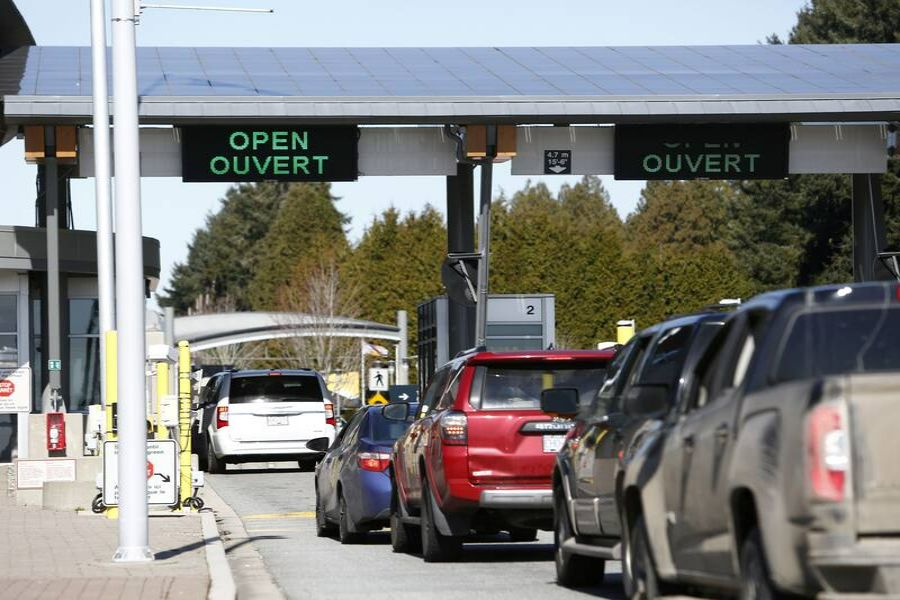
When you cross by car, border officers often ask for your car’s registration. Have the official registration paper and proof of insurance ready.
Borrowed or rental vehicles need extra paperwork, like a letter of permission if you’re not the registered owner. U.S. insurance usually covers you in Canada, but give your provider a quick call to double-check.
Rental car companies might require a cross-border rider—just a bit of fine print, but a big deal if you skip it. Canada uses kilometers—not miles—so those speed limit signs might look high, but you’re actually going slower than you think.
If you’re carrying lots of bags and can’t bring them everywhere, there’s handy luggage storage in major cities near transport stops. Always double-check your car for anything not allowed across the border, so you’re not stuck tossing things at the checkpoint.
Border Crossing Requirements for Children and Families

Crossing the US-Canada border with kids by car gets a bit more complicated than you might expect, especially with all the paperwork and ID rules. If this is your first time, or you haven’t done it since the kids were babies, read up and make sure everything checks out before you roll up to the customs booth.
Traveling with Minors and Consent Letters
Traveling with your own children is usually straightforward—just have your documents ready, buckle up, and drive. The trouble sometimes starts if you’re not their parent or you’re a single parent traveling alone.
Border agents look out for possible child abduction cases, so they’ll ask more questions if your family situation isn’t “typical.” It’s smart—honestly, I’d say essential—to carry a consent letter from any parent or legal guardian not on the trip.
This letter should say you have permission to travel with the child, and it should include contact info for the parents or guardians. I’ve had friends turned away at the border or at least put through a very awkward 30-minute grilling because they forgot this letter.
It doesn’t need to be fancy, but having it notarized makes things smoother. If your kids are traveling in a group—like with school, Scouts, or a sports team—make sure the group has consent letters for every child.
If not, a fun road trip can take a turn for the worse before you even see that little “Welcome to Canada” sign.
Accepted Documentation for Children
Children under 16 don’t need a passport to cross by land or sea, but they need proof of citizenship. Things like a birth certificate (original or a copy), a Consular Report of Birth Abroad, or a Naturalization Certificate will do the trick.
If your family has dual citizenship, bring both passports; you never know which will be more useful. Teens 16 and up should have the same documents as adults, so a passport or a NEXUS card is best.
I’m a stickler for double-checking documents—I always keep a folder in the glove box just for this stuff, along with a couple of snack bars. Makes life way easier when you’re asked for everyone’s ID and you don’t want to hold up the line.
Here’s a quick list for kids under 16:
| Accepted Documents | Notes |
|---|---|
| Birth certificate | Certified copy or original |
| Consular Report of Birth | Abroad or U.S. Naturalization Cert. |
| Passport (not required) | Still accepted and speeds things up |
| Nexus or FAST card | If enrolled in those programs |
Some border officers might ask the child questions directly to confirm identity, especially when only one parent is present. It doesn’t hurt to prep your kids on what to expect—they might like to feel grown-up and official anyway!
Other Relevant Border Crossing Scenarios
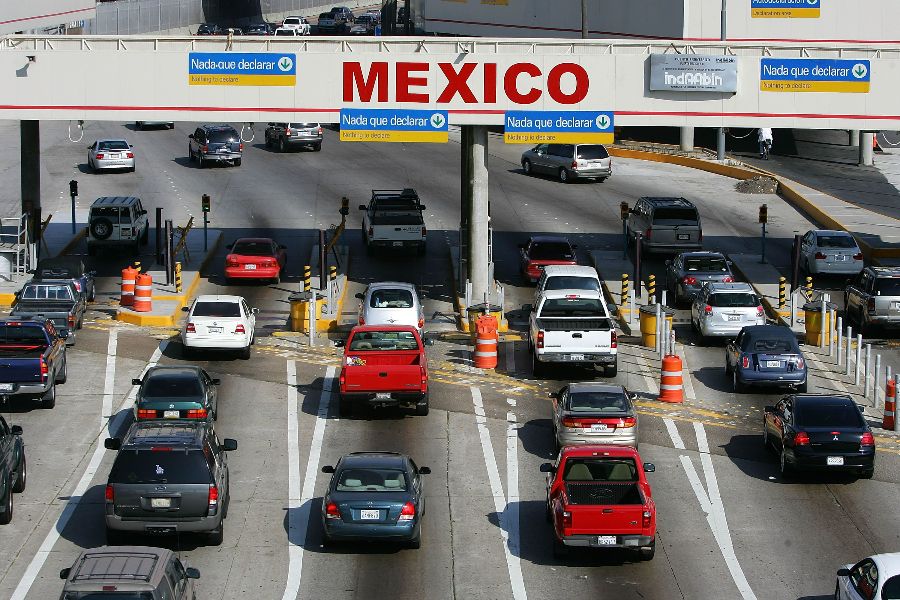
Border crossings aren’t always just between the U.S. and Canada—sometimes your road trip takes unexpected turns. Laws and requirements can change fast, so it pays to know the basics before you set out.
Driving Between U.S., Canada, Mexico, and Bermuda
If you’re considering a drive between the U.S. and Mexico, Mexican authorities will check that you have proper insurance. U.S. car insurance typically won’t cover you in Mexico, even if the company says it offers “some” coverage.
You’ll need to buy Mexican liability insurance for your vehicle, and honestly, I’d recommend getting it in advance. Border towns have lots of kiosks, but it’s easier (and cheaper) to sort that out online before you go.
Crossing into Canada from the U.S. by car, you’ll need a passport, passport card, or an approved travel document like an enhanced driver’s license. Watch for updates to border hours—Canada changes these sometimes, especially around holidays.
As for Bermuda, you can’t drive there from the mainland—you’re hopping on a plane or a ship instead. Bermuda has strict car rental rules: generally only locals can rent a car, and tourists usually rent mopeds or get around by taxi.
So don’t expect to take a ferry with your car and be let loose on the island! If you do cross into Mexico or Canada and plan to head back into the U.S., you need to show proof of citizenship and identity—so, again, a passport, passport card, or enhanced license is your best bet.
I’ve learned from my own trips that having a backup of your documents, even digital copies, can really save you a headache if you lose anything along the way. Always double-check current rules before your trip, as things can change, sometimes with little notice.
Frequently Asked Questions
Driving between the U.S. and Canada isn’t difficult, but the details can trip you up if you aren’t paying attention. Forgotten paperwork, a confusing advisory, or an odd rental car rule can turn a smooth border run into an unwanted detour.
What specific documents are required for U.S. citizens driving into Canada?
You’ll need a valid U.S. passport, passport card, or an approved travel document like a NEXUS card. A driver’s license by itself just won’t cut it.
If you ask me, spring for the passport book unless you’re sure you’ll only ever use land or sea crossings. Your car needs to be registered and insured.
Don’t forget to bring your proof, especially if your glove compartment’s a black hole like mine.
Are there any current travel advisories for Americans driving to Canada?
Travel advisories aren’t super common but it’s always smart to check the U.S. Department of State website before your trip. You might see warnings about weather, protests, or even animal migrations (yes, seriously—the moose up there don’t mess around).
Not every advisory means you shouldn’t go, but you’ll want to know what’s happening first.
How has the border crossing process changed recently for private vehicles entering the U.S. from Canada?
COVID-19 did a number on border crossings, but right now, the main thing is documentation. You don’t need to show test results or vaccination proof at the land border.
Things are nearly back to what they were pre-pandemic—though honestly, the lines seem to come and go no matter what year it is. Border officials still ask the usual questions, and they might take a look in your trunk.
Nothing new there—though being polite and patient always goes further than you’d think.
Can travelers use a REAL ID in place of a passport when crossing the border by car?
Honestly, no—REAL ID just won’t cut it at the border. You can breeze through airport security or walk into federal buildings with one, but when you’re driving into Canada, border agents expect a passport, passport card, or trusted traveler card like NEXUS or SENTRI.
If you try to cross with only a REAL ID, border officers will turn you away. That’s a hassle nobody wants, and I’ve heard more stories about this than you might imagine.
What are the necessary preparations for taking rental cars across the U.S.-Canada border?
Always tell your rental company ahead of time if you’re planning to drive into Canada. Most big-name agencies allow cross-border trips, but you’ve got to let them know so they can update your rental agreement and make sure your insurance is valid in Canada.
Double-check that your insurance card actually lists Canada on it. I once got stuck at the border because I didn’t, and let me tell you, calling customer service from a cold border station isn’t a highlight of my travel career.
Right now, you don’t need any specific vaccinations to drive across the U.S.-Canada border. COVID-19 vaccine mandates and testing? Those have faded into history for this route—unless, of course, something unexpected happens and the rules change.
Still, it’s smart not to get too relaxed. I always keep my health insurance info easily accessible, just in case something goes sideways.
If you travel with medication, stash it in the original packaging and bring your prescription. Trust me, border agents can get surprisingly particular—I’ve had one demand proof for my allergy meds, and let’s just say it’s awkward if you’re not prepared.



robert snyder
i have read all pages,however i would like to know if i can take my mgi ai series and zip series 24 volt lithium-lon battery model:flc–108 when taking it thrugh the us border by car